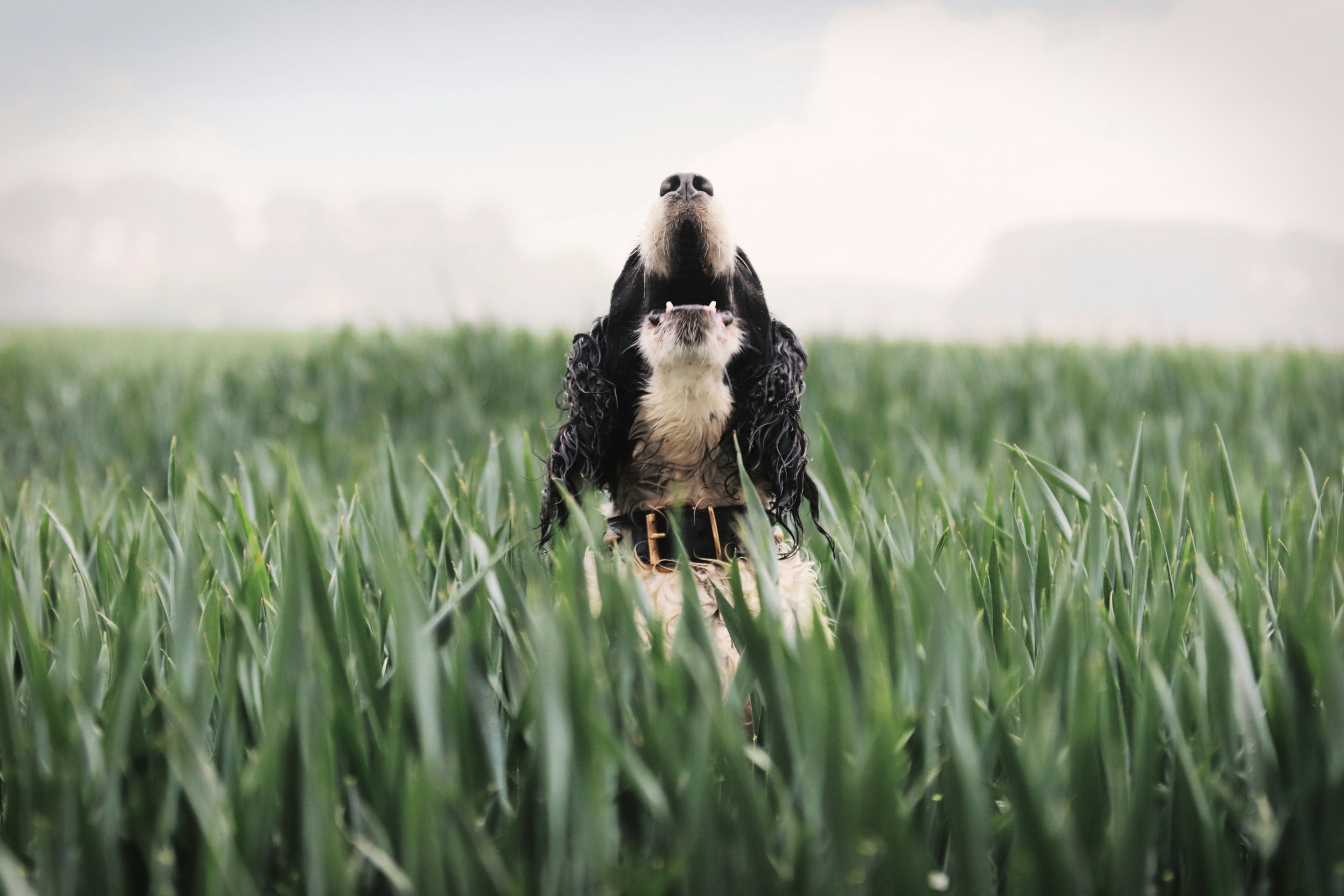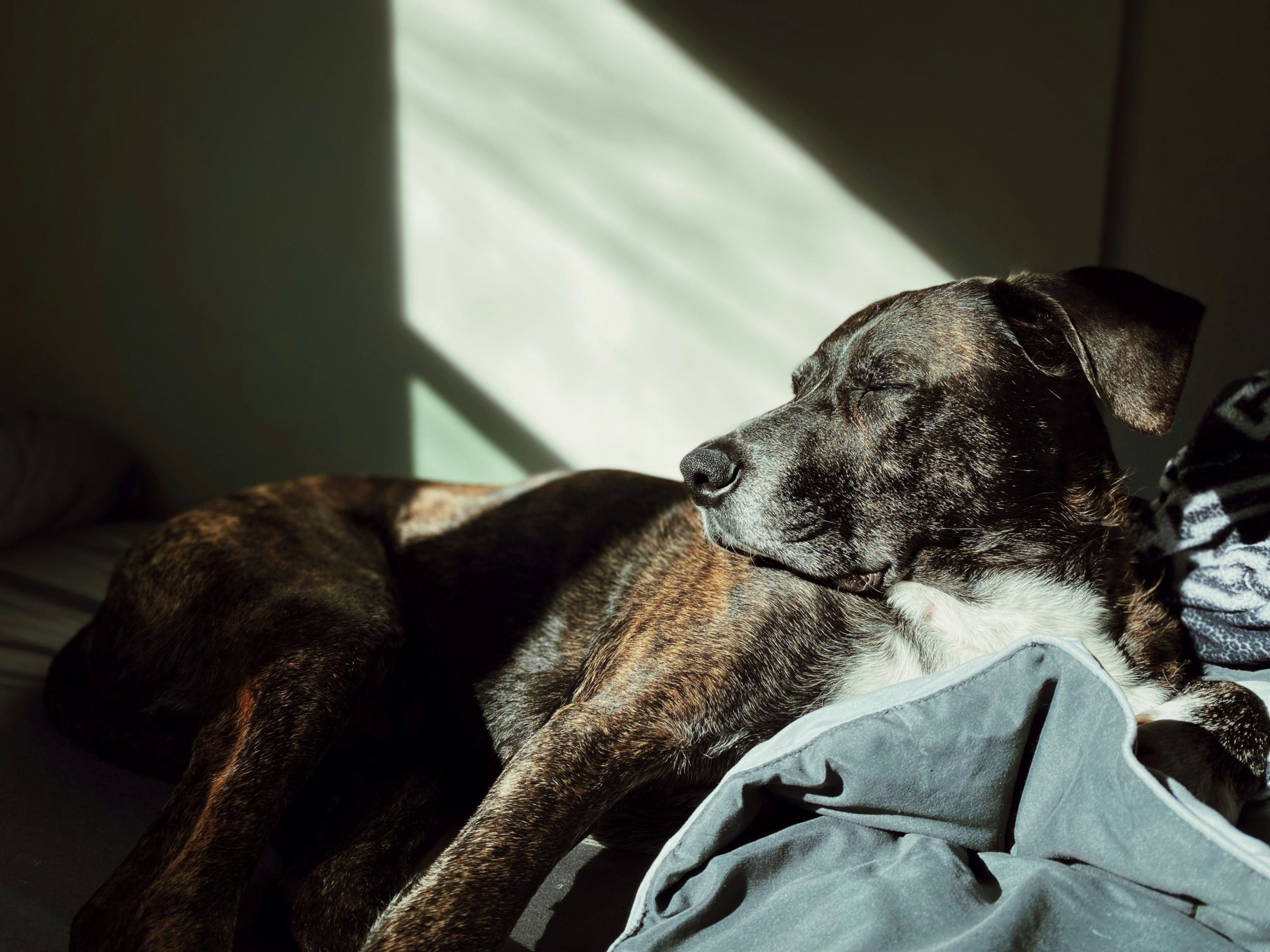Have you ever wondered how dogs get rabies? This is a serious disease that has been part of our history for centuries.
Although it’s rare in some regions, it still demands care and attention. After all, prevention is always the best medicine when it comes to protecting our furry companions.
Let’s dive into everything you need to know about rabies in dogs: how it’s transmitted, what the symptoms are, and how to keep your best friend safe.
Index
- What is rabies in dogs?
- Why do dogs catch rabies?
- Who transmits rabies to dogs?
- Is rabies curable once a dog is infected?
- What causes rabies in a dog?
- How long does it take for rabies to appear in dogs?
- How to know if a dog has rabies
- How to identify a rabid dog
- Symptoms of rabies in dogs
- Early symptoms
- Neurological symptoms
- Advanced symptoms
- Rabies in Humans: Risks and Transmission
- How dogs transmit rabies to humans
- Questions: bites, scratches, etc.
- Rabies Prevention in Dogs
- Conclusion

uma doença que afeta o sistema nervoso dos mamíferos
What is rabies in dogs?
Rabies is a viral disease that affects the central nervous system of mammals, including dogs and humans. Caused by the Rhabdovirus, it leads to inflammation of the brain (encephalitis) and is almost always fatal once symptoms appear.
The disease spreads mainly through the bite of an infected animal, since the virus is present in saliva. That’s why prevention through vaccination is essential — both to protect your dog and to ensure public health.
It causes severe neurological damage because it attacks the nervous system, leading to symptoms such as:
- irritability, mental confusion, aggression
- extreme sensitivity to air currents
- aversion to water (hydrophobia)
- difficulty swallowing
- excessive salivation
- insomnia
- fever
- delirium and hallucinations
- muscle spasms
- seizures
- coma
- generalized paralysis
- respiratory paralysis
Furious rabies is the form of the disease in which the dog shows behavioral changes such as aggression. Paralytic rabies is the form in which the dog develops paralysis, difficulty swallowing, and excessive salivation.
Some people call rabies “hydrophobia,” but that term actually refers to just one of its possible symptoms.
Why do dogs catch rabies?
Because they come into contact with the rabies virus — usually through the saliva of an infected animal, whether alive or dead. This can happen via a bite, a lick on an open wound, or even a scratch contaminated with saliva.
Who transmits rabies to dogs?
Wild animals such as bats, raccoons, opossums, foxes, and even other infected dogs are the main transmitters. That’s why it’s essential to keep your pet’s vaccinations up to date and avoid contact with wild animals or domestic animals of unknown origin (especially if you don’t know whether they receive proper care and vaccinations) or those showing strange behavior.
Is rabies curable once a dog is infected?
Unfortunately, no. Rabies can be prevented with the rabies vaccine and, in cases of suspected contact, with rabies immunoglobulin (antiserum) — a treatment known as post-exposure prophylaxis. But once symptoms appear, rabies is 100% fatal in dogs and almost always fatal in humans. The only protection is prevention through vaccination.
What causes rabies in a dog?

Transmitted through contact with the saliva of infected domestic or wild animals
The disease is transmitted through contact with the rabies virus, mainly by:
- Bites
- Scratches
- Saliva from infected animals
Once inside the dog’s body, the virus multiplies until it reaches the nervous system.
a) Bite from infected animals
This is the most common form of transmission. The bite directly injects contaminated saliva into the dog’s body.
-
How can a dog catch rabies from a bat?Bats are the main urban transmitters of rabies today. If a dog bites, sniffs, or tries to play with a sick bat (even one that is already dead), it can become infected.
-
How can a dog catch rabies from a rat?
Urban rats rarely transmit rabies — but beware: they can carry other serious diseases, such as leptospirosis. When it comes to rabies, the greatest risk is from bats and other wild mammals.
b) Contact with the saliva of a sick animal
Not only saliva but also body fluids can transmit rabies: licking open wounds, eyes, mouth, or nose can spread the virus. That’s why you should never allow your pet to interact with strange or sick animals.
-
How can a dog catch rabies from another dog?
If an infected dog bites, licks wounds, or even scratches another dog, transmission can occur. That’s why dogs suspected of having rabies must be isolated immediately.
c) Scratches contaminated with saliva
Even when fluids aren’t visible, saliva may be present on the nails or skin of an animal, carrying the virus. This way, a scratch from a contaminated animal can introduce the virus into the tissue of a healthy dog if it penetrates the bloodstream.
How long does it take for rabies to appear in dogs?

The incubation period of rabies is usually long, but once the disease develops, it progresses very quickly.
After a dog is exposed to the virus, rabies does not appear immediately. Instead, there is an incubation period that typically lasts 15 to 60 days after exposure (between two weeks and two months). This period can vary depending on the viral load — in other words, the location of the bite and the amount of virus introduced may delay or accelerate the onset.
It’s important not to wait for visible signs of the disease, because by then it is too late to protect your dog. After any contact with a suspicious animal, or any bite, you should take your pet to the veterinarian immediately for preventive treatment.
How to know if a dog has rabies
Do not wait for symptoms to appear before seeing a veterinarian, even though only they can make the official diagnosis. Rabies can only be prevented while the virus is still incubating, before the disease develops and symptoms emerge.
Besides the incubation stage, it is important to know that once symptoms appear, they develop quickly but progressively— not all at once. At first, there may be behavioral changes, followed by severe neurological and physical symptoms. After the initial signs, it may take as little as a week for the disease to reach advanced stages.
How to identify a rabid dog
To recognize suspicious behavior in other animals, watch for signs such as:
- Sudden aggression
- Fear of light or sound
- Excessive salivation
- Difficulty swallowing
- Disorientation
Keep your dog away from any animal showing these behaviors, and consult a veterinarian immediately if contact occurs.
Symptoms of rabies in dogs
How a dog behaves when infected with rabies
After viral contamination and the incubation period, when the disease actually develops, behavior changes very quickly. A dog that was once calm may become aggressive, restless, and fearful. Within just a few days, symptoms get worse.
Early symptoms (prodromal stage – lasts about 2 to 3 days)
- Mild fever
- Changes in behavior
- Loss of appetite
- Itching or pain at the bite site
Neurological symptoms (excitation stage – appears after 3 to 7 days)
- Aggressiveness
- Dilated pupils
- Intense salivation
- Fear of water or sound
- Altered barking
Advanced symptoms (paralytic stage)
- Paralysis in the limbs
- Difficulty breathing
- Coma
- Death
Rabies in Humans: Risks and Transmission

Post-exposure prophylactic treatment is effective in preventing the disease in humans
Rabies is also a serious disease with a very high fatality rate in humans. If there is any contact with infected saliva (bite or scratch), it is crucial to see a doctor immediately and begin treatment with prophylaxis, rabies immunoglobulin, and the rabies vaccine. After contact, wash the area right away (whether there is a visible wound or not) with soap and water, and go to the nearest health unit for medical evaluation.
The rabies vaccine for humans is essential to prevent the disease. It is usually applied preventively (pre-exposure) to at-risk groups (such as veterinarians, handlers, etc.), called PrEP, and post-exposure to people who may have had potential contact with the virus (through bites, scratches, or licks from wild animals that cannot be observed, or from infected domestic animals), called PEP.
How Dogs Transmit Rabies to Humans
Mainly through:
- Bites
- Licks on mucous membranes or open wounds
-
Scratches contaminated with saliva
What happens if a dog with rabies bites a person?
The person is contaminated with the virus, and must be taken urgently to an emergency medical facility for rabies PEP.
Can rabies be transmitted through a scratch?
Yes. If the scratch contains infected saliva (even if it isn’t visible to the naked eye), there is a risk of transmission. The scratched person should be taken to a health unit to follow the preventive procedures.
Rabies Prevention in Dogs
 prevention, prevention, prevention!
prevention, prevention, prevention!
The good news is that rabies is 100% preventable. Here are the essential steps to keep your dog safe:
a) Can a vaccinated dog get rabies?
It’s extremely rare. Annual vaccination is highly effective and drastically reduces the risk of infection.
- Mandatory annual vaccination
- Rabies vaccination is required by law and must be given every year, either during public campaigns or at your vet.
b) Avoid contact with wild animals
Do not let your dog approach bats, raccoons, skunks, or foxes—alive or dead. If you find a wild animal: do not touch it, do not allow your dog or cat near it, and contact animal control.
c) Supervise walks
Always keep your dog on a leash during walks, and pay attention to what they are sniffing or interacting with. This prevents unwanted contact with other animals or animal remains.
d) Preventive care after possible exposure
If your dog comes into contact with a suspicious animal—through licking, scratching, or biting—rush to the vet so your pet can receive preventive treatment.
e) Pest control
Avoid the keeping around (or in) your home any unused items, and also garbage and food scraps, as they can attract rabies vectors.
f) Isolation in suspected cases
If an animal shows symptoms suspicious of rabies, it must be isolated immediately, and the case should be reported to the authorities.
g) Mass vaccination (dogs and cats)
This is one of the most effective strategies to eliminate rabies in both urban and rural areas. The more pets vaccinated, the less chance the virus has to circulate. Participate in your city’s vaccination campaigns and encourage other pet owners to do the same.
Conclusion
Rabies is a very serious disease, but it is completely preventable—for both pets and humans. Making sure your dog is protected from invisible threats like this is not only an act of love for them, but also a way to protect the people and animals around you. To do that, remember:
- Keep annual vaccinations up to date
- Zero contact with wild animals, alive or dead
- Stay alert during walks
- Maintain a clean and safe environment
- Seek immediate veterinary care in case of suspicious contact
With these precautions, you ensure more years of health and peace of mind for your pet—and for your whole family and community as well.




Leave a comment
This site is protected by hCaptcha and the hCaptcha Privacy Policy and Terms of Service apply.